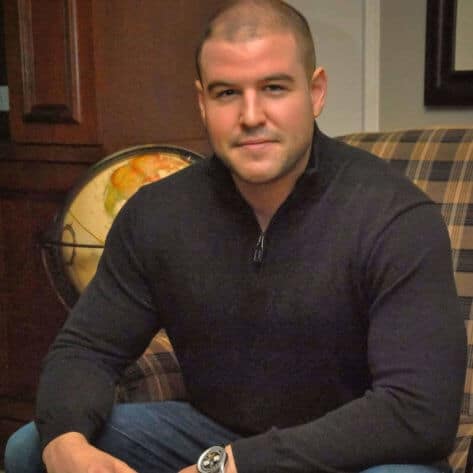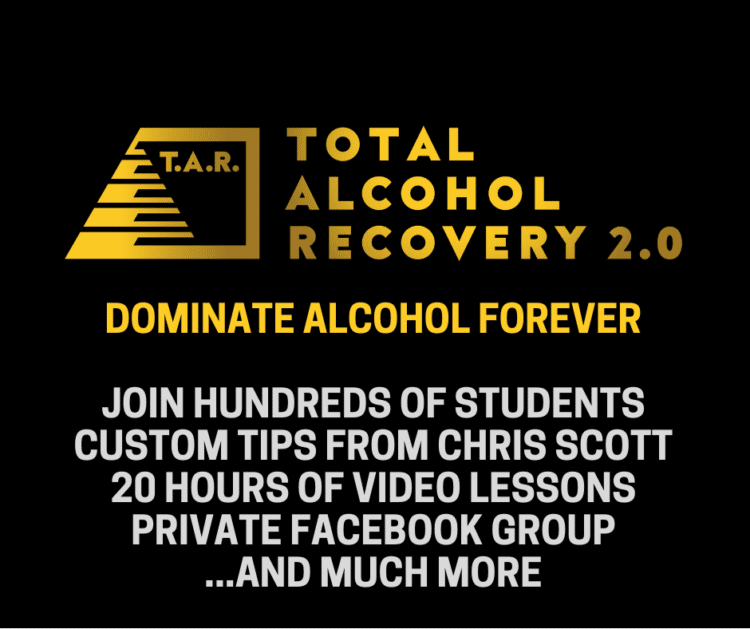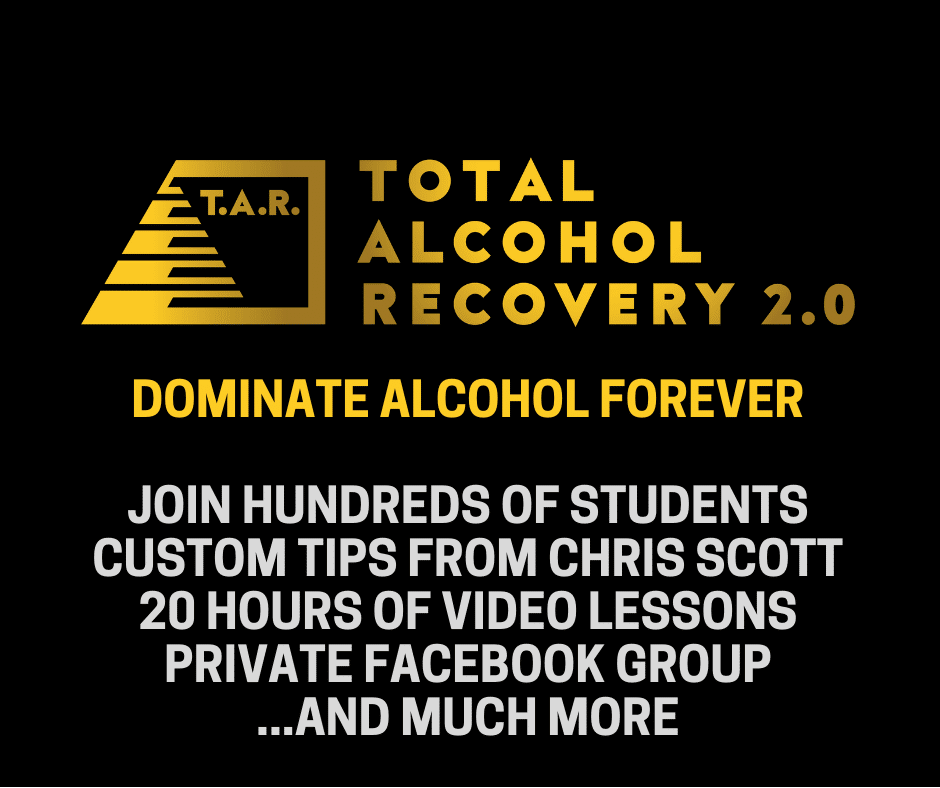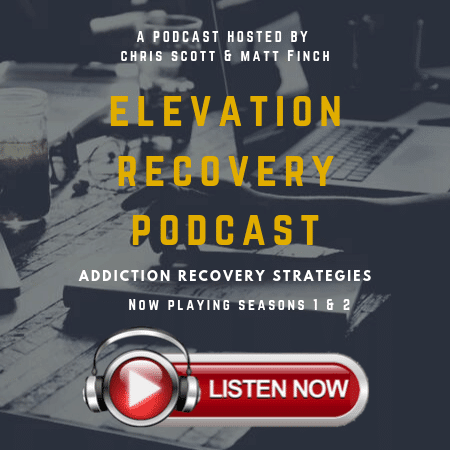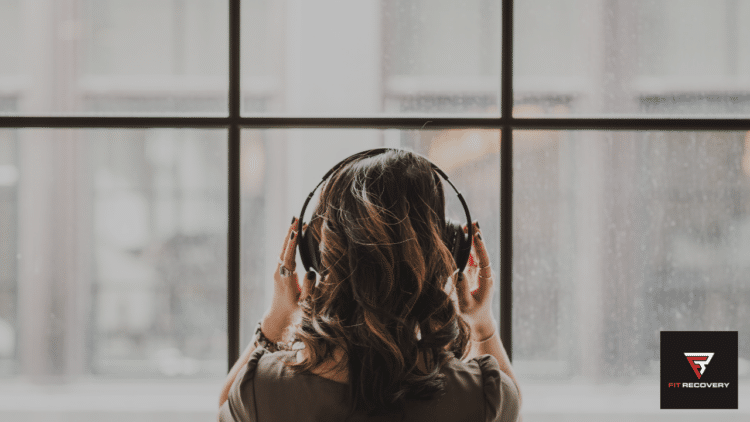
In episode 302 of the Elevation Recovery Podcast, Matt Finch discusses binaural beats therapy, what it is, and how it can help with addiction, insomnia, mental health and anxiety, and more.
He reads from an article discussing the topic, talks about his own experience using binaural beats as a form of therapy, and offers some of his favorite binaural beats music and therapy.
Links to Resources Mentioned in this Episode:
- Do Binaural Beats Have Health Benefits?
- SleepTube – Hypnotic Relaxation Youtube Channel
- Sleep Phones
- Manta Sleep
- Total Alcohol Recovery 2.0
- BioRebalance Restore
Here are some ways to learn from this episode:
- Watch the video
- Listen to the audio
- Read the transcript
- Right-click here and save as to download this episode on your computer
Matt Finch: Hi, my friend. Matt Finch here, introducing the extraordinary flagship program created by Chris Scott, the founder of Fit Recovery. This is a one of a kind online program for dominating alcohol through biochemical optimization, mindset and more. Why continue to test out trial and error when you could follow a powerful and proven, 100% customizable system? Get instant access to over 20 hours of step-by-step video instruction, the ability to ask your questions to Chris Scott and his head coach, Matt Finch. That's me. And the rest of the life-changing and transformation, catalyzing features and benefits included in the program. To learn more, read or watch testimonials and get started. Visit fitrecovery.com/course and to save an additional $25, use coupon code 444 at fitrecovery.com/course.
Announcer: Thanks for tuning in to the Elevation Recovery Podcast, your hub for addiction recovery strategies. Hosted by Chris Scott and Matt Finch.
Matt Finch: Welcome to episode 302 of Elevation Recovery. I'm Matt Finch, your host. And in today's episode, you're going to learn all about binaural beats therapy and how that can help with addiction, insomnia, mental health, anxiety, and much more. I found a really cool article on healthline.com, I really like this blog. The title is "Do binaural beats have health benefits." So I'm going to read this article to you and then afterwards I'll talk about how I use binaural beats and I'll give you some of my favorite YouTube channels with binaural beat music and therapy. Without further ado, let's get right into it. What are binaural beats? When you hear two tones, one in each ear that are slightly different in frequency, your brain processes a beat at the difference of the frequencies. This is called a binaural beat. Here's an example. Let's say you're listening to a sound in your left ear that's out of frequency of 132 hertz.
And in your right ear, you're listening to a sound that's out of frequency of 121 hertz. Your brain, however, gradually falls into synchrony with the difference or 11 hertz. Instead of hearing two different tones, you instead hear a tone at 11 hertz in addition to the two tones given to each ear. Binaural beats are considered auditory illusions. For a binaural beat to work, the two tones have to have frequencies less than 1000 hertz. And the difference between the two tones can't be more than 30 hertz. The tones also have to be listened to separately, one through each ear. Binaural beats have been explored in music and are sometimes used to help tune instruments, such as pianos and organs. More recently, they have been connected to potential health benefits. What health benefits are binaural beats claimed to have? Binaural beats are claimed to induce the same mental state associated with a meditation practice, but much more quickly.
In effect, binaural beats are said to reduce anxiety, increase focus and concentration, lower stress, increase relaxation, foster positive moods, promote creativity, help manage pain. Meditation is the practice of calming the mind and tuning down the number of random thoughts that pass through it. A regular meditation practice has been shown to reduce stress and anxiety, slow down the rate of brain aging and memory loss, promote mental health and lengthen attention span. Practicing meditation regularly can be quite difficult, so people have looked to technology for help. Binaural beats between one and 30 hertz are alleged to create the same brainwave pattern that one would experience during meditation. When you listen to a sound with a certain frequency, your brainwaves will synchronize with that frequency. The theory is that binaural beats can help create the frequency needed for your brain to create the same waves commonly experienced during a meditation practice. The use of binaural beats in this way is sometimes called brainwave entrainment technology.
How do you use binaural beats? All you need to experiment with binaural beats is a binaural beat audio and a pair of headphones or earbuds. You can easily find audio files of binaural beats online, such as on YouTube or via downloaded audio files to your MP3 player or mobile device. As mentioned earlier, for a binaural beat to work, the two tones have to have frequencies of less than 1000 hertz, and the difference between the two tones can't be more than 30 hertz. You can also decide which brainwave fits your desired state in general. Binaural beats in the delta, one to four hertz range, have been associated with deep sleep and relaxation. Binaural beats in the theta, four to eight hertz range, are linked to REM sleep, reduced anxiety, relaxation, as well as meditative and creative states. Binaural beats in the alpha frequencies, eight to 13 hertz, are thought to encourage relaxation, promote positivity, and decrease anxiety.
Binaural beats in the lower beta frequencies, 14 to 30 hertz, have been linked to increased concentration and alertness, problem-solving and improved memory. Binaural beats of 40 hertz were found to be helpful in enhancing training and learning according to a 2020 study. When listening to binaural beats it's best to sit in a comfortable place free of distractions. Listening to the binaural beat audio for at least 30 minutes each day in your headphones ensures that the rhythm is entrained has fallen into synchronization throughout the brain. You can experiment with the length of time you listen to the binaural beats to find out what works for you. For example, if you're experiencing high levels of anxiety or stress, you may want to listen to the audio for a full hour or longer. Remember, you must use headphones for binaural beats to work. You may also want to listen with your eyes closed.
Is there any research to support the claims? While most studies on the effects of binaural beats have been small, there are several that provide evidence that this auditory illusion does indeed have health benefits, especially related to anxiety, mood, and performance. An older 2005 controlled study in roughly a hundred people about to undergo surgery also found that binaural beats were able to significantly reduce preoperative anxiety compared to similar audio without the binaural tones and no audio at all. In the study, anxiety levels were cut in half for people who listened to the binaural beat audio. A 2007 uncontrolled study asked eight adults to listen to a binaural beat CD with delta, one to four hertz, beat frequencies for 60 days straight. The results of the study found that listening to binaural beats for 60 days significantly reduced anxiety and increased the overall quality of life of these participants.
Since the study was small, uncontrolled, and relied on patient surveys to collect data, larger studies will be needed to confirm these effects. One larger 2011 randomized and controlled trial looked at the use of binaural beats and 291 patients admitted to the emergency department at a hospital. The researchers observed significant decreases in anxiety levels in patients exposed to audio with embedded binaural beats compared to those who listened to audio without binaural beats or no audio at all. A 2009 study combined the effects of binaural beats and autonomous sensory meridian response, ASMR, a phenomenon of a relaxation response to certain audio or visual triggers. It was suggested that the combination of the two were more beneficial than either separately. However, a 2015 review of studies found that most studies in this area are limited or contradictory and that there's evidence of diminishing impact over time.
More research is needed to fully understand the potential benefits and how they differ from monaural beats. Are there any side effects to listening to binaural beats? There are no known side effects to listening to binaural beats, but you'll want to make sure that the sound level coming through your headphones isn't set too high. Prolonged exposure to sounds at or above 85 decibels can cause hearing loss over time. This is roughly the level of noise produced by heavy traffic. Binaural beat technology could be a problem if you have epilepsy, so you should speak with your doctor before trying it. More research is needed to see if there are any side effects to listening to binaural beats over a long period of time. The bottom line, with several human studies to back up the health claims, binaural beats appear to be a potential tool in the fight against anxiety, stress, and negative mental states.
Research has found that listening daily to audio with binaural beats may have positive effects on anxiety, memory, mood, creativity, attention. Learning to meditate isn't always easy. Binaural beats won't work for everyone and they aren't considered a cure for any particular condition. However, they might offer an auditory escape for those interested in relaxing, sleeping more peacefully or entering a meditative state. All right, and that concludes that very helpful article. I am huge into music therapy, binaural beat therapy, isochronic tones therapy, [inaudible 00:10:25] frequencies therapy, ASMR therapy and anything that goes like that, meaning anything that is pleasant to my ears and pleasant to my body by listening to it. One of my favorite channels that has binaural beats on YouTube is called SleepTube. These are beautiful, really professional sounding soundscapes that some have nature sounds in, like rain or wind or thunder, along with synthesizer music and binaural beats.
The guy who owns that channel is named Zack, and he has so many cool soundscapes that have delta waves in them, that have theta waves in them, that have alpha waves, and sometimes he combines them or he does sequences. For example, some of my favorite tracks on SleepTube are the ones where they start off for the first 30 minutes in theta waves. So that's binaural beats that are helping your brain to entrain to theta waves. Theta brainwaves are the brainwaves right when we're waking up in the morning and coming out of our delta sleep waves, and again at night as we're drifting off to sleep. We travel through theta brainwaves before we get into the delta sleep waves. And then on some of Zach's tracks, like I was saying, after about 30 minutes of theta waves, then he'll bring on the delta wave binaural beats.
I've probably listened to more than a hundred hours of just the SleepTube channel in the last few years, all of which have binaural beats as far as I know. Another channel is called Mind Amend, that's by a guy named Jason Lewis. He doesn't use binaural beats, but he uses something very similar called isochronic Tones. Instead of having a constant tone in each ear with isohronic tones, it's more like a [inaudible 00:12:25], instead of a [inaudible 00:12:28] and then the other ear a [inaudible 00:12:30]. With isochronic tones, it would be something like [inaudible 00:12:35], and then on the other ear [inaudible 00:12:39].
So these work really well too, and his channel, again is Mind Amend. So Chris Scott and I both listen to him a lot with our headphones on or earbuds on, and we typically use Jason Lewis' mixes on the Mind Amend channel for productivity, focus, creativity. He's got a lot of things where he's using isochronic tones that help your brain come into the alpha or even beta waves. And his music is phenomenal. He's got so many great videos over the many, many years he's been on YouTube. I also recently purchased something called the Manta Sleep Mask. It was only about 30 something dollars, maybe $35, which is an expensive sleep mask, but it is extremely comfortable and it's total blackout. So now what I've been doing since I got those is I'll listen to binaural beats or isochronic tones with my SleepPhones by AcousticSheep, which is a really comfortable headband with small, little Bluetooth speakers that you can't even feel when you're wearing the headband.
So I'll have my SleepPhones, Bluetooth, basically headband on, and then I'll have my Manta Sleep Mask on over that in my really comfortable La-Z-Boy chair, and then I will be totally blacked out. There's no light getting in my eyes whatsoever, so everything's black, and I have these wonderful soundscapes playing in my ears, and I'm enjoying the benefits of brainwave entrainment technology in the form of binaural beats or isochronic tones depending on when it is. Or doing cool stuff that doesn't have any binaural beats or isochronic tones but I'm listening to it for the [inaudible 00:14:33] frequencies and other types of very pleasant to the mind and body and ear types of healing frequencies. Some of my favorite music is tuned at 528 hertz, 396 hertz, 417 hertz, 432 hertz, 639 hertz, 963 hertz, and the Schumann resonance frequency as well. And with that being said, if you're not already listening to these things that I've mentioned, I highly recommend checking out the following. One, binaural beats. Two, isochronic tones. Three, [inaudible 00:15:16] frequencies. Four, other healing frequencies like [inaudible 00:15:21] and the Schumann resonance.
I also highly recommend checking out SleepPhones and checking out Manta Sleep. One website is sleepphones.com, and the other one is mantasleep.com. By optimizing and maximizing your use of and efficacy of these types of different sound therapies, you can reduce anxiety, increase confidence, help with sleep, pain relief, focus, improved mood, deeper meditation, and many other benefits depending on the type or the combinations of these sound therapies we've been talking about today. And with that being said, we love you so, so much. Take good care of yourself. Thanks for listening, and I'll see you on the next episode.
Chris Scott: Hey, everyone, Chris Scott here. If you like the information on today's episode regarding supplementation and empowerment strategies for addiction recovery, then please subscribe to the Elevation Recovery Podcast and leave us a rating and review on iTunes. And if you've benefited directly from this information, I'm confident in saying that you'll love the information packed online courses that Matt Finch and I have created. Matt Finch's Ultimate Opiate Detox 4.0 is a six module, 30 activity course that contains video lessons, written lessons, PDF downloads, worksheets, audios, and much more. And it has everything you could possibly need to know to conquer opioid addiction in the easiest and most comfortable way possible. My own course, Total Alcohol Recovery 2.0, is the most cutting edge resource for anyone who wants to transcend alcohol and build their best lives. To get these courses, to learn more and to read testimonials, simply go to opiateaddictionsupport.com/ultimate. Again, that's opiateaddictionsupport.com/ultimate. For Matt's course or for my course, go to fitrecovery.com/course. Again, that's fitrecovery.com/course. You can also go to elevationrecovery.com to see the show notes for this episode.
Sign up to receive email updates
Enter your name and email address below and I'll send you periodic updates about the podcast.


Author
-
Chris Scott founded Fit Recovery in 2014 to help people from around the world dominate alcohol dependence and rebuild their lives from scratch. A former investment banker, he recovered from alcohol dependence using cutting-edge methods that integrate nutrition, physiology, and behavioral change. Today, Chris is an Alcohol Recovery Coach and the creator of an online course called Total Alcohol Recovery 2.0.
View all posts


